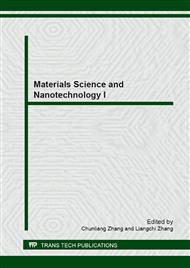p.736
p.741
p.746
p.751
p.755
p.759
p.765
p.769
p.773
Study on Flux Pinned Vertical Force between High-Temperature Superconductor and Permanent Magnet
Abstract:
The flux pinned force attracts our eyes, where the levitating system is widely investigated for the transportable application. Although plenty of experiments can lead to many significant consequences, the mechanism has been not understood completely since the enormously complicated behavior and quantum effect involve. In this paper, in order to calculate the flux pinned force analytically, the image-dipole model is adopted and improved and the simple and precise expression of magnetic strength is utilized, so the flux pinned vertical force can be calculated in analytical form. In addition, the experimental data in case of zero field-cooling and field-cooling experiment can be collected in our experimental table and the comparison is completed between the precise and simple formula and the experimental data, the precise version of expression fro flux pinned vertical force can correspond to the experimental data well.
Info:
Periodical:
Pages:
755-758
Citation:
Online since:
December 2012
Authors:
Price:
Сopyright:
© 2013 Trans Tech Publications Ltd. All Rights Reserved
Share:
Citation:



